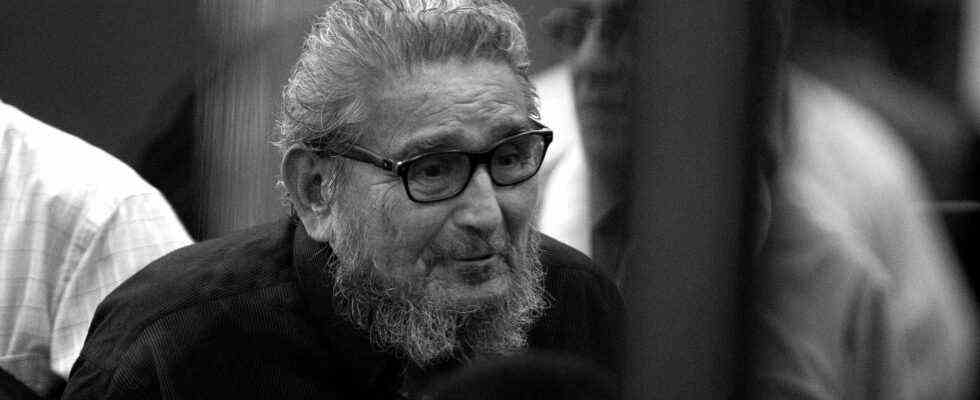Status: 12.09.2021 10:10 a.m.
For decades the “Shining Path” terrified Peruvian farmers. In its prime, the guerrillas were active in half of the country. Their former leader Guzmán has now died.
The former leader of the Peruvian guerrilla organization “Shining Path” (“Sendero Luminoso”) is dead. Abimael Guzmán died at the age of 86 in the maximum security prison on the Callao naval base, the prison administration said. The only general cause of death named was “complications in his health”.
The former rebel leader’s condition had deteriorated over the past few months. He hardly ate any more and was treated in the hospital for a while.
“The terrorist leader Abimael Guzmán, who is responsible for the loss of countless lives among our compatriots, is dead,” wrote President Pedro Castillo on Twitter. “Our condemnation of terrorism is firm and irrevocable. Only in a democracy will we build a Peru of justice and development for our people.”
About 70,000 people died in the civil war
Guzmán initially worked as a professor of philosophy at the University of Ayacucho in the 1960s. He later went underground and founded the Maoist rebel organization “Shining Path”. The impoverished Andean region of Ayacucho became the group’s central area of activity. From there, the “Shining Path” proclaimed the “People’s War” in 1979 against the country’s political and economic elite.
It is estimated that around 70,000 people died in the civil war that followed. Guzmán wanted to enforce a Marxist system based on the model of Mao Zedong in Peru. Not only was he a supporter of Maoism, but he also adopted the brutal methods of the leader of the Khmer Rouge in Cambodia, Pol Pot.
Massacre of indigenous rural people
Although the “Shining Path” pretended to stand up for the indigenous rural population, it was precisely against them that it proceeded with extreme brutality. For example, in 1984 Guzmán ordered a massacre of the population in the Andean village of Soras because they had refused to support him. 117 people were killed. In the early 1990s, the guerrillas were active in half of Peruvian territory.
Under President Alberto Fujimori (1990-2000), the Peruvian security forces intensified the fight against the guerrilla group and used strongly repressive methods.
Guzmán was caught in 1992 and imprisoned on a naval base in Callao, near the capital, Lima. While in custody, the former guerrilla commander married his long-time colleague Elena Yparraguirre in 2010. This was the vice head of the “Shining Path”. She is also serving a life sentence in a prison in Lima.
“The greatest genocide in our history is dead”
The “Shining Path” was never completely defeated, but today it is estimated that there are only a few hundred members who are dedicated to drug trafficking. They are particularly active in the valleys of the Apurímac, Ene and Mantaro (Vraem) rivers, where state institutions are poorly represented. The area is an important growing area for the coca plant. Along with Colombia and Bolivia, Peru is the largest cocaine producer in the world.
“The problem of terrorism is not the same as it used to be, now it is in the Vraem where we have remains, but it is closely linked to drug trafficking and what this area needs is the presence of the state in all sectors,” said Defense Minister Walter Ayala. Only in May alleged fighters of the “Shining Path” killed 16 people in central Peru.
“The greatest genocide in our history is dead, but not his gang of terror,” wrote the mayor of the capital Lima, Jorge Muñoz, on Twitter. “He did not spend enough time for the atrocities he committed. Today, more than ever, the Peruvians must unite against the new attacks of nefarious radical madness.”
Former leader of the guerrilla Shining Path has died
Anne Herrberg, ARD Rio de Janeiro, September 12, 2021 11:41 am

